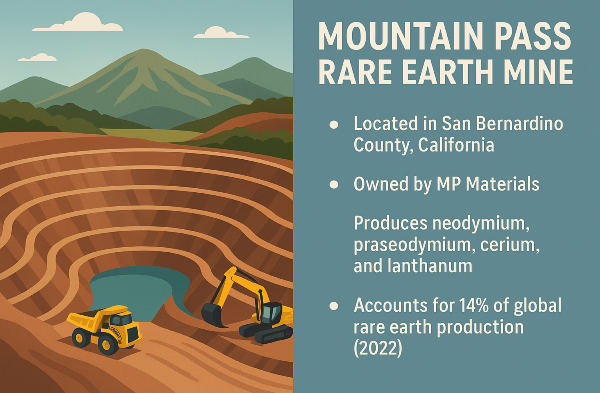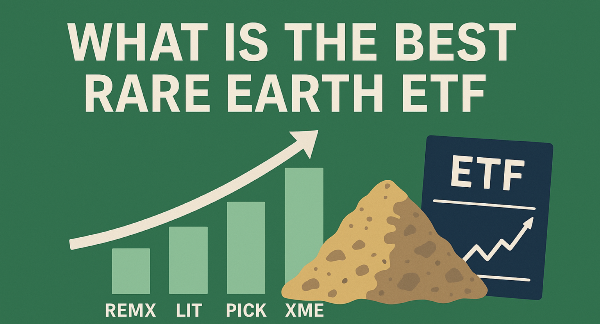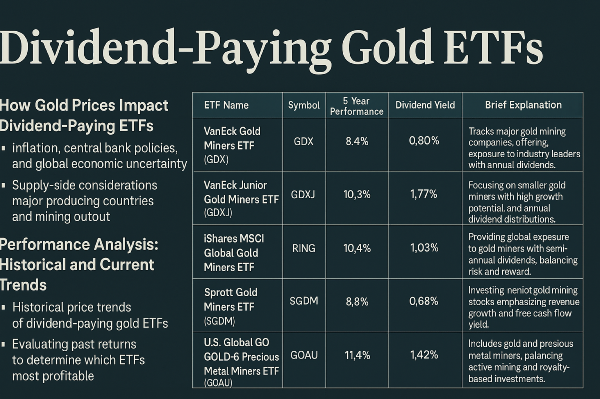Introduction
Large-cap stocks play a critical role in the financial markets, representing companies with substantial market capitalization and industry influence. These stocks are typically well-established, offering investors stability and long-term growth potential. Understanding how market capitalization impacts stock classification is essential for assessing investment options. While large-cap stocks are often seen as safe investments, they also come with unique risks and growth limitations. This article explores the fundamentals of large-cap stocks, their key characteristics, and effective strategies for investing in them.
Fundamentals of Market Capitalization
Market capitalization, commonly referred to as market cap, represents the total value of a company's outstanding shares. It is calculated by multiplying the current share price by the number of shares available in the market. Investors use market capitalization to assess a company's size and financial stability, helping them determine risk levels and investment strategies. Larger companies tend to have higher market caps. Companies are categorized into different market cap segments based on their valuation. Large-cap stocks typically have a market capitalization exceeding $10 billion. Mid-cap stocks range between $1 billion and $10 billion. Small-cap stocks, valued between $250 million and $1 billion.
Several well-known companies fall into the large-cap category, demonstrating strong financial performance and market influence. Examples include Apple[APPL], Microsoft[MSFT], and Amazon[AMZN], each boasting multi-trillion-dollar valuations. These companies are often included in major stock indices such as the S&P 500, reinforcing their significance in the financial markets. Large-cap stocks generally attract long-term investors seeking stability, dividends, and consistent returns over time.
Sources
Corporate Finance Institute
Investopedia
Bankrate
Are Large-Cap Stocks a Safe Investment?
Large-cap stocks are often considered safer investments due to their financial stability and market influence. These companies typically have strong balance sheets, consistent revenue streams, and established business models, making them less volatile than smaller stocks. However, they are not entirely risk-free. Economic downturns, industry disruptions, and regulatory changes can impact their performance. Investors seeking security often favor large-cap stocks for their ability to withstand market fluctuations while maintaining steady growth.
Compared to mid-cap and small-cap stocks, large-cap stocks generally exhibit lower volatility and more predictable returns. Mid-cap stocks offer a balance between growth potential and risk, while small-cap stocks tend to be more volatile but can yield higher returns. Large-cap stocks, such as those included in the S&P 500, are widely followed by analysts and institutional investors, contributing to their stability. While they may not experience rapid growth like smaller companies, they provide reliable dividends and long-term value.
Sources
SmartAsset
Forbes
Money Smart Guides
Key Characteristics of Large-Cap Stocks
Large-cap stocks hold significant influence in financial markets due to their size and stability. These companies are often included in major stock indices such as the S&P 500, Dow Jones Industrial Average, and Nasdaq-100. Their presence in these indices reflects their market leadership and ability to shape broader economic trends. One of the defining characteristics of large-cap stocks is their lower volatility compared to mid-cap and small-cap stocks. Historically, large-cap stocks have demonstrated resilience during economic downturns, providing investors with a sense of security. Although, they may not experience rapid growth like smaller companies.
Dividend payouts are another key feature of large-cap stocks, attracting income-focused investors. Many large-cap companies distribute dividends regularly, offering shareholders a consistent return on investment. These dividends can provide passive income and help offset market volatility. Companies such as Coca-Cola[KO], Johnson & Johnson[JNJ], and Procter & Gamble[PG] have maintained strong dividend histories, reinforcing the appeal of large-cap stocks for those seeking financial stability and predictable returns.
Sources
SmartAsset
Finance Strategists
MarketBeat
Investment Benefits and Risks
Large-cap stocks offer financial stability, making them a preferred choice for conservative investors. These companies have well-established business models, strong revenue streams, and consistent profitability. Additionally, many large-cap stocks pay dividends, providing a reliable income source for long-term investors. Despite their advantages, large-cap stocks come with certain limitations. Their growth potential is often slower compared to mid-cap and small-cap stocks, as they have already reached maturity in their respective industries.
Economic downturns can also impact their performance.
Investors must weigh the benefits and risks when considering large-cap stocks for their portfolios. While they provide stability and predictable returns, they may not offer the rapid growth opportunities found in smaller companies. Diversification across different market cap segments can help balance risk and reward, ensuring a well-rounded investment strategy.
Sources
Money Smart Guides
SmartAsset
Fincier
Investment Strategies for Large-Cap Stocks
Investors can approach large-cap stocks through direct investments or diversified funds. Purchasing individual stocks allows for targeted investments in specific companies, enabling investors to capitalize on strong financial performance. Alternatively, ETFs and mutual funds provide exposure to a broad range of large-cap stocks, reducing risk through diversification. These funds track major indices like the S&P 500, offering a balanced approach for those seeking stability without managing individual stock selections.
Portfolio diversification is essential when investing in large-cap stocks. While these stocks provide stability, combining them with mid-cap and small-cap stocks can enhance growth potential and mitigate risks. Evaluating financial metrics and business fundamentals is crucial for selecting strong large-cap stocks. Investors analyze key indicators such as earnings growth, price-to-earnings ratios, and dividend yields to assess a company's financial health. Additionally, reviewing industry trends and competitive positioning helps determine long-term viability.
Sources
Morningstar
SmartAsset
BlackRock
Top Large-Cap Stocks to Watch
Large-cap stocks play a crucial role in shaping market trends and investor sentiment. These companies, often valued at over $10 billion, dominate their industries and influence broader economic movements. Industry leaders such as Nvidia[NVDA], Tesla[TSLA], and Invesco[IVZ] QQQ have consistently demonstrated strong financial performance and market resilience. Their ability to adapt to technological advancements and consumer demands makes them key players in the global economy.
Companies like Starbucks, ExxonMobil, and Taiwan Semiconductor have maintained consistent growth, benefiting from strong business models and market positioning. While large-cap stocks may not experience rapid price surges like smaller companies, their historical performance suggests long-term reliability. The future outlook for large-cap stocks remains promising, driven by innovation and economic recovery. Companies investing in artificial intelligence, renewable energy, and digital transformation are expected to lead market growth. As industries evolve, large-cap stocks will continue to provide investors with opportunities for stable returns and portfolio diversification.
Sources
MarketBeat
Benzinga
The Motley Fool
Conclusion
Large-cap stocks offer investors stability, financial strength, and long-term growth potential. Their inclusion in major indices, lower volatility, and consistent dividend payouts make them a reliable choice for those seeking steady returns. While they may not match the high growth rates of mid-cap or small-cap stocks, their resilience during market fluctuations and strong business fundamentals provide security for long-term investors. By understanding their characteristics, benefits, risks, and investment strategies, investors can make informed decisions that align with their financial goals and risk tolerance.
📌 Read More About Large-Cap Stocks
The Top Large-Cap Stocks- https://stockbossup.com/pages/topics/large-cap
Why are Large-Caps Outperforming? https://stockbossup.com/pages/post/38628/why-are-large-caps-outperforming
What Are the Disadvantages of Large-Cap Funds? - https://stockbossup.com/pages/post/38591/what-are-the-disadvantages-of-large-cap-funds




























Introduction
Large-cap stocks play a critical role in the financial markets, representing companies with substantial market capitalization and industry influence. These stocks are typically well-established, offering investors stability and long-term growth potential. Understanding how market capitalization impacts stock classification is essential for assessing investment options. While large-cap stocks are often seen as safe investments, they also come with unique risks and growth limitations. This article explores the fundamentals of large-cap stocks, their key characteristics, and effective strategies for investing in them.
Fundamentals of Market Capitalization
Market capitalization, commonly referred to as market cap, represents the total value of a company's outstanding shares. It is calculated by multiplying the current share price by the number of shares available in the market. Investors use market capitalization to assess a company's size and financial stability, helping them determine risk levels and investment strategies. Larger companies tend to have higher market caps. Companies are categorized into different market cap segments based on their valuation. Large-cap stocks typically have a market capitalization exceeding $10 billion. Mid-cap stocks range between $1 billion and $10 billion. Small-cap stocks, valued between $250 million and $1 billion.
Several well-known companies fall into the large-cap category, demonstrating strong financial performance and market influence. Examples include Apple[APPL], Microsoft[MSFT], and Amazon[AMZN], each boasting multi-trillion-dollar valuations. These companies are often included in major stock indices such as the S&P 500, reinforcing their significance in the financial markets. Large-cap stocks generally attract long-term investors seeking stability, dividends, and consistent returns over time.
Sources Corporate Finance Institute
Investopedia
Bankrate
Are Large-Cap Stocks a Safe Investment?
Large-cap stocks are often considered safer investments due to their financial stability and market influence. These companies typically have strong balance sheets, consistent revenue streams, and established business models, making them less volatile than smaller stocks. However, they are not entirely risk-free. Economic downturns, industry disruptions, and regulatory changes can impact their performance. Investors seeking security often favor large-cap stocks for their ability to withstand market fluctuations while maintaining steady growth.
Compared to mid-cap and small-cap stocks, large-cap stocks generally exhibit lower volatility and more predictable returns. Mid-cap stocks offer a balance between growth potential and risk, while small-cap stocks tend to be more volatile but can yield higher returns. Large-cap stocks, such as those included in the S&P 500, are widely followed by analysts and institutional investors, contributing to their stability. While they may not experience rapid growth like smaller companies, they provide reliable dividends and long-term value.
Sources
SmartAsset
Forbes
Money Smart Guides
Key Characteristics of Large-Cap Stocks
Large-cap stocks hold significant influence in financial markets due to their size and stability. These companies are often included in major stock indices such as the S&P 500, Dow Jones Industrial Average, and Nasdaq-100. Their presence in these indices reflects their market leadership and ability to shape broader economic trends. One of the defining characteristics of large-cap stocks is their lower volatility compared to mid-cap and small-cap stocks. Historically, large-cap stocks have demonstrated resilience during economic downturns, providing investors with a sense of security. Although, they may not experience rapid growth like smaller companies.
Dividend payouts are another key feature of large-cap stocks, attracting income-focused investors. Many large-cap companies distribute dividends regularly, offering shareholders a consistent return on investment. These dividends can provide passive income and help offset market volatility. Companies such as Coca-Cola[KO], Johnson & Johnson[JNJ], and Procter & Gamble[PG] have maintained strong dividend histories, reinforcing the appeal of large-cap stocks for those seeking financial stability and predictable returns.
Sources
SmartAsset
Finance Strategists
MarketBeat
Investment Benefits and Risks
Large-cap stocks offer financial stability, making them a preferred choice for conservative investors. These companies have well-established business models, strong revenue streams, and consistent profitability. Additionally, many large-cap stocks pay dividends, providing a reliable income source for long-term investors. Despite their advantages, large-cap stocks come with certain limitations. Their growth potential is often slower compared to mid-cap and small-cap stocks, as they have already reached maturity in their respective industries.
Economic downturns can also impact their performance. Investors must weigh the benefits and risks when considering large-cap stocks for their portfolios. While they provide stability and predictable returns, they may not offer the rapid growth opportunities found in smaller companies. Diversification across different market cap segments can help balance risk and reward, ensuring a well-rounded investment strategy.
Sources
Money Smart Guides
SmartAsset
Fincier
Investment Strategies for Large-Cap Stocks
Investors can approach large-cap stocks through direct investments or diversified funds. Purchasing individual stocks allows for targeted investments in specific companies, enabling investors to capitalize on strong financial performance. Alternatively, ETFs and mutual funds provide exposure to a broad range of large-cap stocks, reducing risk through diversification. These funds track major indices like the S&P 500, offering a balanced approach for those seeking stability without managing individual stock selections.
Portfolio diversification is essential when investing in large-cap stocks. While these stocks provide stability, combining them with mid-cap and small-cap stocks can enhance growth potential and mitigate risks. Evaluating financial metrics and business fundamentals is crucial for selecting strong large-cap stocks. Investors analyze key indicators such as earnings growth, price-to-earnings ratios, and dividend yields to assess a company's financial health. Additionally, reviewing industry trends and competitive positioning helps determine long-term viability.
Sources
Morningstar
SmartAsset
BlackRock
Top Large-Cap Stocks to Watch
Large-cap stocks play a crucial role in shaping market trends and investor sentiment. These companies, often valued at over $10 billion, dominate their industries and influence broader economic movements. Industry leaders such as Nvidia[NVDA], Tesla[TSLA], and Invesco[IVZ] QQQ have consistently demonstrated strong financial performance and market resilience. Their ability to adapt to technological advancements and consumer demands makes them key players in the global economy.
Companies like Starbucks, ExxonMobil, and Taiwan Semiconductor have maintained consistent growth, benefiting from strong business models and market positioning. While large-cap stocks may not experience rapid price surges like smaller companies, their historical performance suggests long-term reliability. The future outlook for large-cap stocks remains promising, driven by innovation and economic recovery. Companies investing in artificial intelligence, renewable energy, and digital transformation are expected to lead market growth. As industries evolve, large-cap stocks will continue to provide investors with opportunities for stable returns and portfolio diversification.
Sources
MarketBeat
Benzinga
The Motley Fool
Conclusion
Large-cap stocks offer investors stability, financial strength, and long-term growth potential. Their inclusion in major indices, lower volatility, and consistent dividend payouts make them a reliable choice for those seeking steady returns. While they may not match the high growth rates of mid-cap or small-cap stocks, their resilience during market fluctuations and strong business fundamentals provide security for long-term investors. By understanding their characteristics, benefits, risks, and investment strategies, investors can make informed decisions that align with their financial goals and risk tolerance.
📌 Read More About Large-Cap Stocks
The Top Large-Cap Stocks- https://stockbossup.com/pages/topics/large-cap
Why are Large-Caps Outperforming? https://stockbossup.com/pages/post/38628/why-are-large-caps-outperforming
What Are the Disadvantages of Large-Cap Funds? - https://stockbossup.com/pages/post/38591/what-are-the-disadvantages-of-large-cap-funds